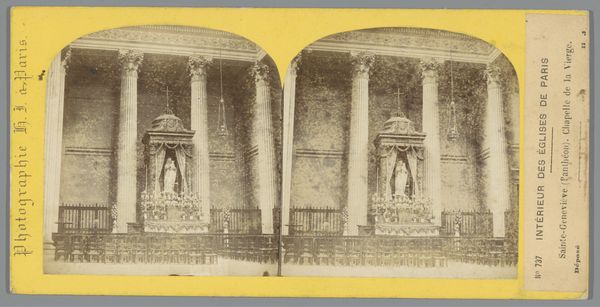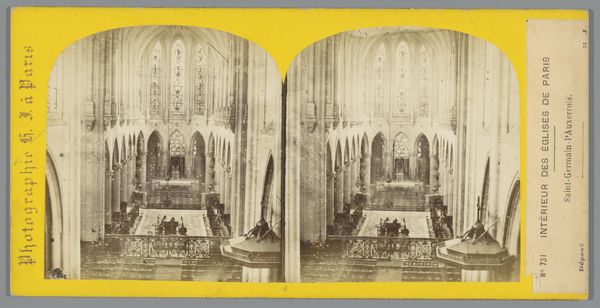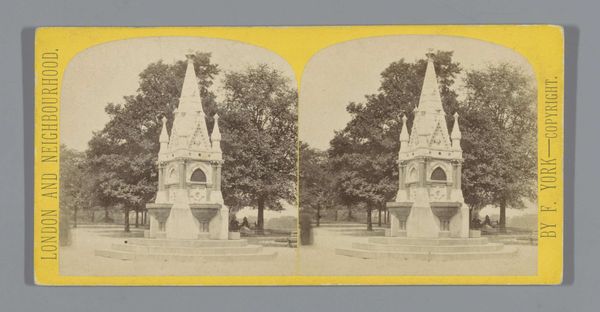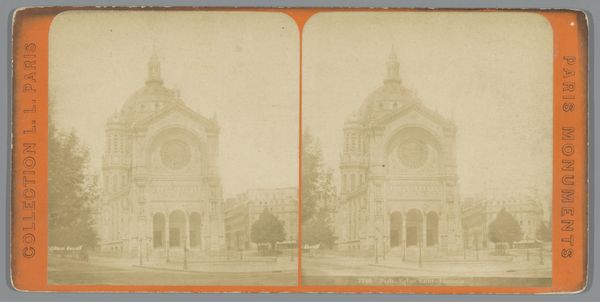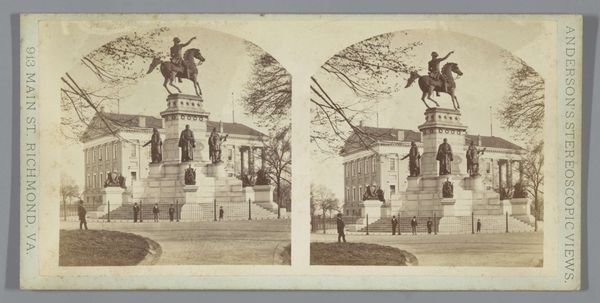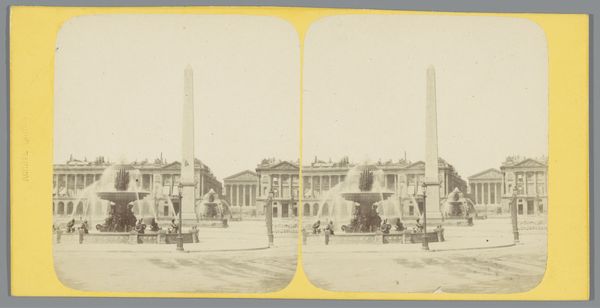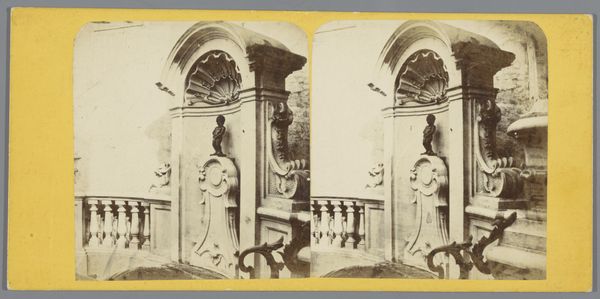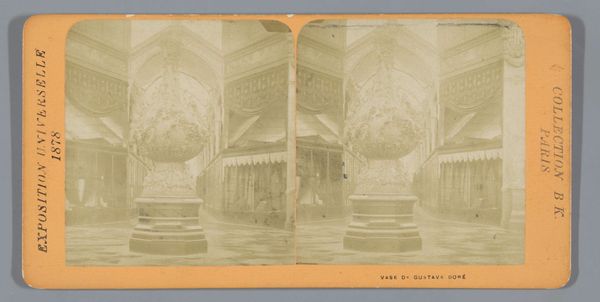
Dimensions: height 87 mm, width 172 mm
Copyright: Rijks Museum: Open Domain
Hippolyte Jouvin's stereoscopic photograph captures the interior of the Panthéon in Paris, using a process that was itself a marvel of industrial ingenuity. Photography in the 19th century was not just about capturing an image; it was a chemical, optical, and ultimately social process. Early photography demanded time, skill, and industrial support to produce the lenses, chemicals, and paper required. This view of the Panthéon is a composite image that shows two perspectives of the same object, creating an illusion of depth when seen through a stereoscope. The architecture is rendered in monochromatic detail. We can consider the labour and materials involved in constructing this grand monument in the first place, then the labor and materials of the photographer, and finally the consumption of the photograph by a mass audience. Photographs like this remind us that even seemingly straightforward images are the result of complex processes and networks, blurring the lines between art, industry, and society.
Comments
No comments
Be the first to comment and join the conversation on the ultimate creative platform.
